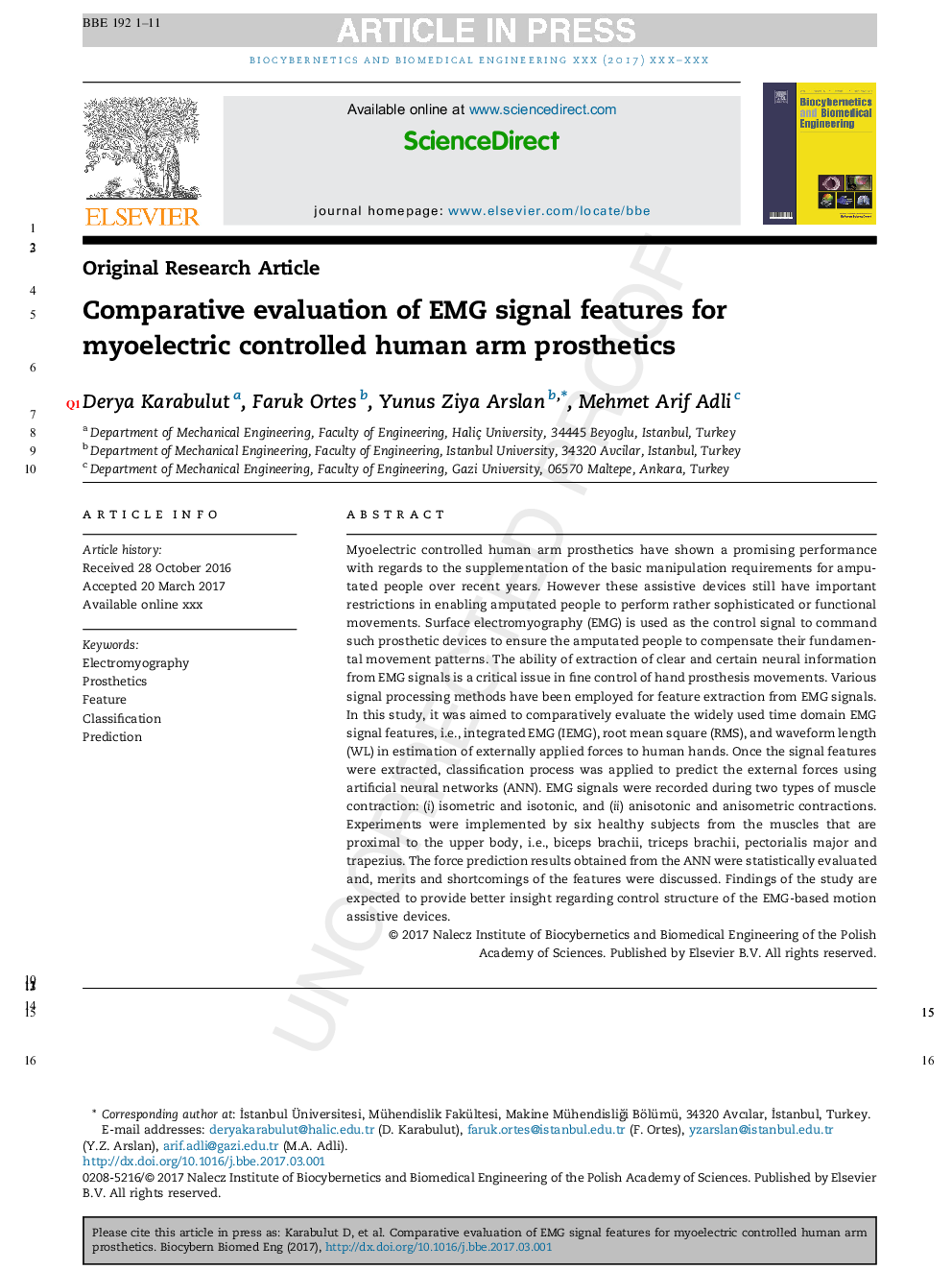| Article ID | Journal | Published Year | Pages | File Type |
|---|---|---|---|---|
| 6484237 | Biocybernetics and Biomedical Engineering | 2017 | 11 Pages |
Abstract
Myoelectric controlled human arm prosthetics have shown a promising performance with regards to the supplementation of the basic manipulation requirements for amputated people over recent years. However these assistive devices still have important restrictions in enabling amputated people to perform rather sophisticated or functional movements. Surface electromyography (EMG) is used as the control signal to command such prosthetic devices to ensure the amputated people to compensate their fundamental movement patterns. The ability of extraction of clear and certain neural information from EMG signals is a critical issue in fine control of hand prosthesis movements. Various signal processing methods have been employed for feature extraction from EMG signals. In this study, it was aimed to comparatively evaluate the widely used time domain EMG signal features, i.e., integrated EMG (IEMG), root mean square (RMS), and waveform length (WL) in estimation of externally applied forces to human hands. Once the signal features were extracted, classification process was applied to predict the external forces using artificial neural networks (ANN). EMG signals were recorded during two types of muscle contraction: (i) isometric and isotonic, and (ii) anisotonic and anisometric contractions. Experiments were implemented by six healthy subjects from the muscles that are proximal to the upper body, i.e., biceps brachii, triceps brachii, pectorialis major and trapezius. The force prediction results obtained from the ANN were statistically evaluated and, merits and shortcomings of the features were discussed. Findings of the study are expected to provide better insight regarding control structure of the EMG-based motion assistive devices.
Related Topics
Physical Sciences and Engineering
Chemical Engineering
Bioengineering
Authors
Derya Karabulut, Faruk Ortes, Yunus Ziya Arslan, Mehmet Arif Adli,
